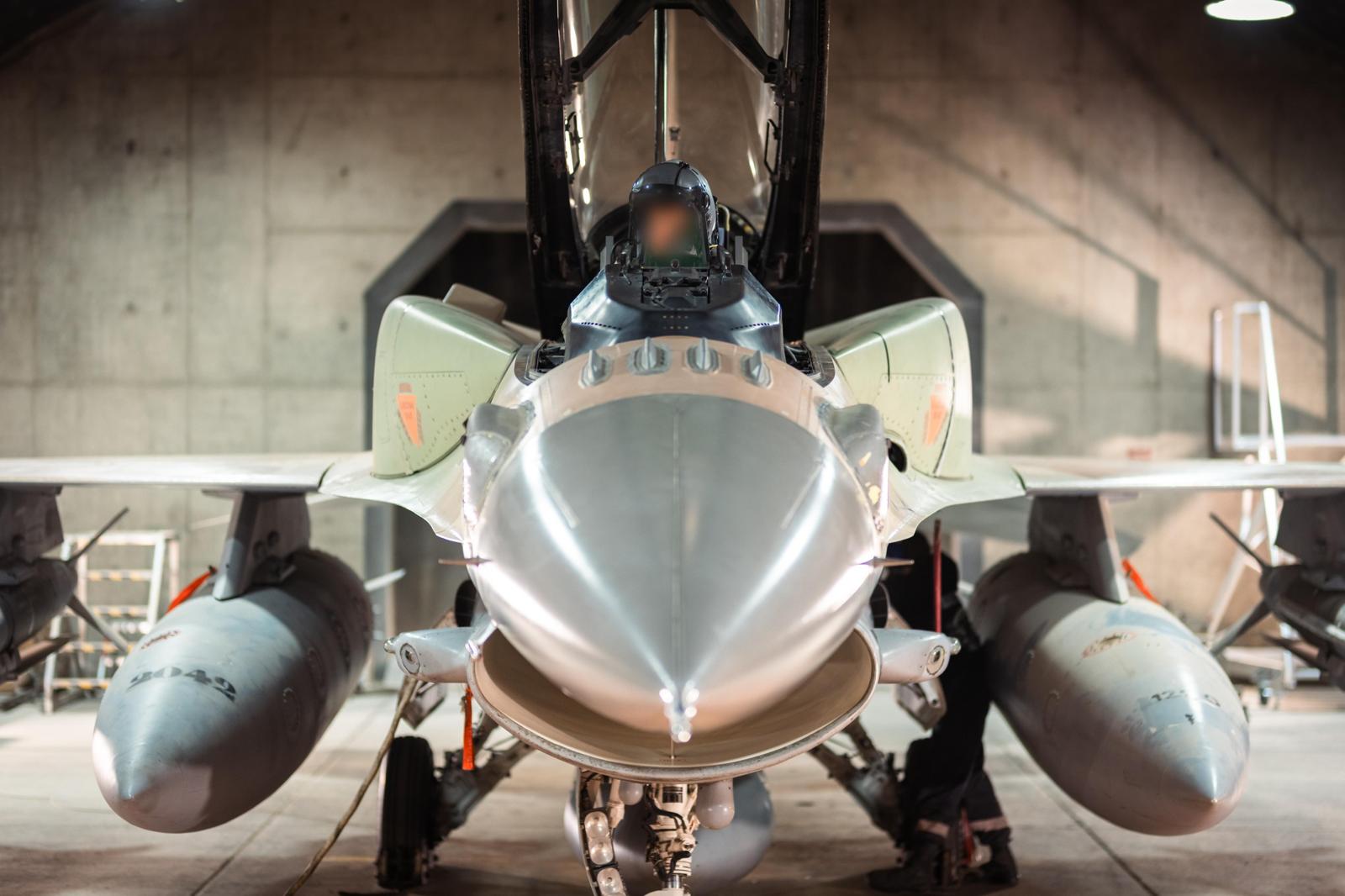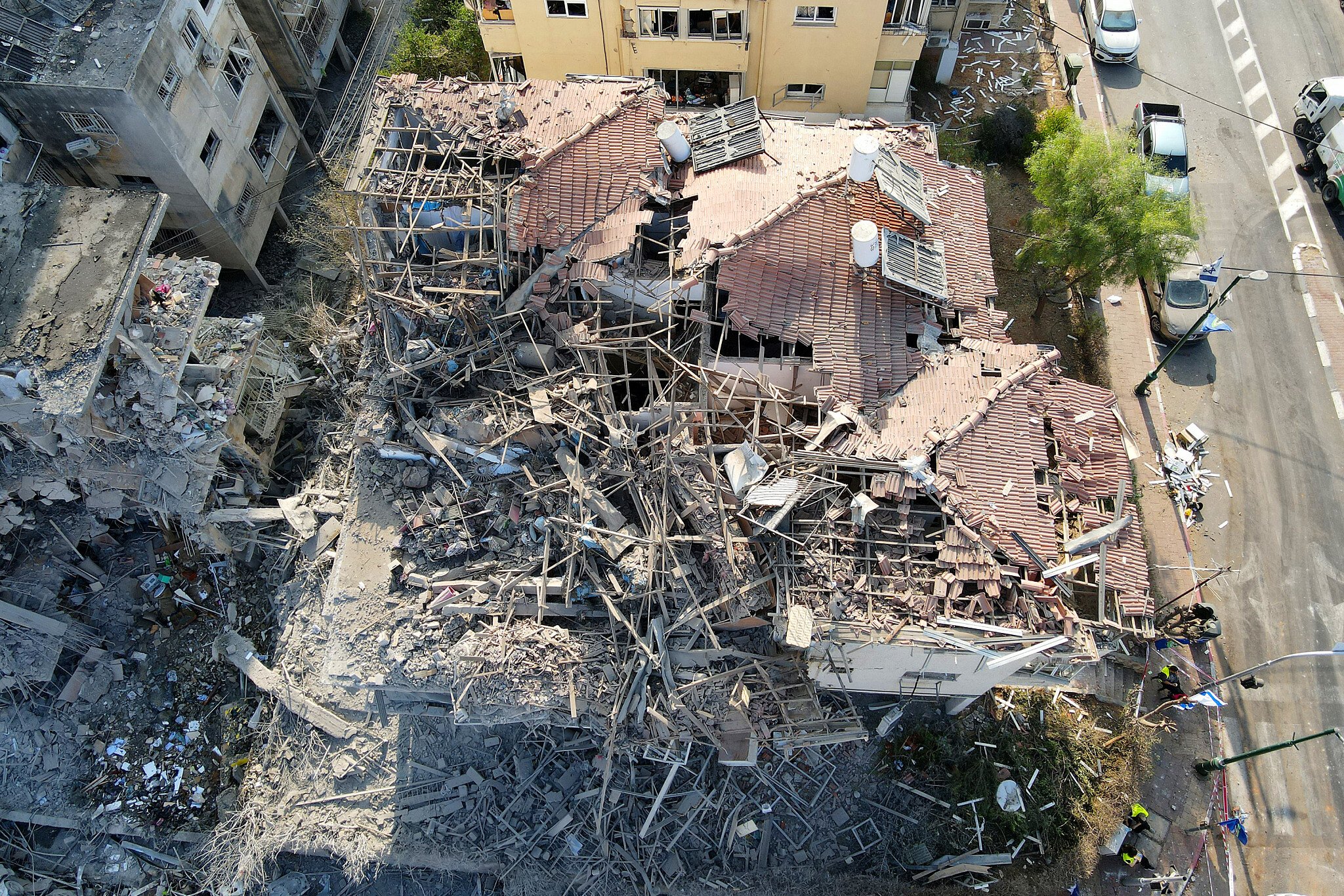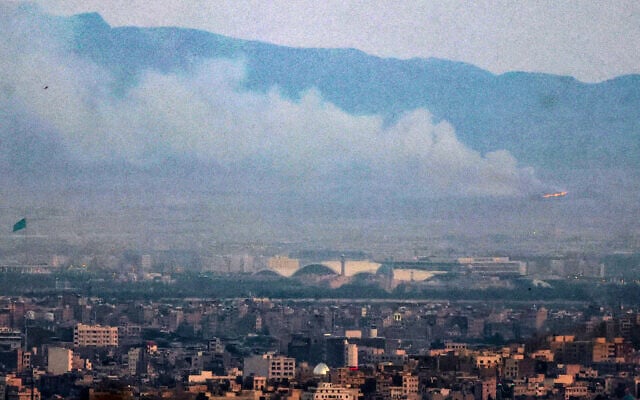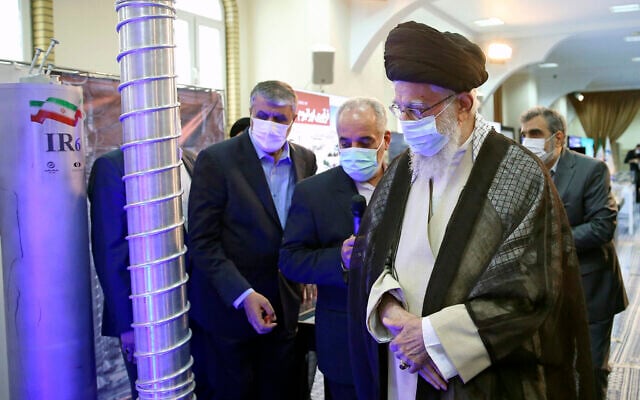



Defense Minister Israel Katz warned Saturday that “Tehran will burn” if Iranian Supreme Leader Ayatollah Ali Khamenei does not stop the deadly missile attacks on Israel’s home front, as the Israel Defense Forces said it was aiming to operate freely over Tehran after taking out air defenses overnight.
“The Iranian dictator is turning the citizens of Iran into hostages and creating a reality in which they, especially the residents of Tehran, will pay a heavy price for the criminal attack on Israeli civilians,” said Katz during an assessment with IDF Chief of Staff Lt. Gen. Zamir, Mossad chief David Barnea and other top military officials.
Israeli Air Force chief Maj. Gen. Tomer Bar said the overnight attacks were the first time Israeli fighter jets had flown over Tehran and had targeted Iran’s air defenses, enabling the military more freedom of aerial action above the Iranian capital. Zamir hailed the strikes, saying “the way to Tehran has been paved.”
“According to the plans, air force fighter jets will begin to carry out strikes on targets in Tehran,” the military added.
Previous strikes in Tehran were carried out using standoff munitions fired from a distance.
The sound of explosions and Iranian air defense systems firing at targets echoed across central Tehran shortly after midnight.
The Fars news agency, which is run by Iran’s Islamic Revolutionary Guard Corps, reported overnight that two projectiles had hit Mehrabad airport, which is close to Iranian leadership sites and hosts an air force base with fighter jets and transport aircraft. Local media reported flames at the site.
IDF Spokesman Brig. Gen. Effie Defrin said over 70 Israeli Air Force fighter jets participated in the overnight operation in Tehran to achieve aerial freedom of action over the Iranian capital.
He said some 40 sites were targeted, including air defense systems and related assets.
IAF fighter jets and drones flew over Tehran for some two and a half hours during the operation, Defrin said. “The dozens of aircraft are flying freely over Tehran, thanks to the opening blow that removed the threat of Iranian air defense systems.”
Defrin said it was the deepest area in Iran that the IAF has operated in so far. “Tehran is no more immune; the capital is exposed to Israeli attacks,” he added.
IAF officials said that its operation against Iran was “advancing according to the plan” and “working well” so far. Still, the officials said the IAF was preparing for a sudden further escalation with Iran.
The official said that the IAF was working to disrupt attempts by Iran to launch massive ballistic missile barrages on Israel, with fighter jets flying over the launch sites. As time goes on, Iran’s ability to launch missiles at Israel will be slowly degraded, the IAF officials said..
The military released footage showing the identification of Iranian ballistic missile launchers in Tehran, shortly before they were targeted in strikes.
Later Saturday, Iranian media reported new Israeli strikes in cities in Iran’s west and northwest, which house key defense and military bases.
The Fars and Mehr news agencies said the strikes hit the northwestern city of Tabriz as well as parts of the western provinces of Lorestan, Hamedan, and Kermanshah.
Two people were killed in an Israeli attack on a missile site in Assadabad in western Iran, Iranian news sites reported.
Israel began striking Iran’s nuclear program and missile production early Friday, triggering waves of ballistic missiles from Iran throughout the night that killed three people, wounded dozens and caused extensive damage in central Israel. At least three other aerial targets were also downed in Israel’s south Saturday morning, the military said.
The military announced that seven soldiers were lightly injured by a ballistic missile impact in central Israel overnight. The soldiers were taken to hospitals and have since been released to their homes, the military said.
Israelis were instructed to remain close to a safe room throughout the night, with the warning removed only on Saturday afternoon.
Out of some 200 missiles fired at Israel, the military said just 50 were not intercepted “according to protocol,” meaning they were left to strike open areas without causing damage to any critical infrastructure.
A “small number” of missiles made it through air defenses, the IDF said, including in residential areas in Tel Aviv, Ramat Gan, and Rishon Lezion in central Israel.

The military says that all its bases, including air bases, were operating as usual with no harm to their functionality.
The military has routinely emphasized that, as good as Israel’s multi-layered air defense is, they are not hermetic and urged Israelis to heed Home Front Command instructions to take shelter in safe rooms and bomb shelters when incoming missile warnings are received.
The scenes of devastation at the sites of impact are largely attributed to the large explosive warheads that the missiles carry. The military estimates that Iran’s ballistic missiles have a 500 kilogram (1,100 lbs) warhead, the same kind it fired at Israel in April and October 2024.
The Iran-backed Houthis, who have been firing missiles at Israel for months, generally use smaller warheads to enable their missiles to reach Israel.
Israel’s strikes have decimated Iran’s military leadership.
On Saturday, Khamenei named Majid Mousavi to replace Amirali Hajizadeh as commander of the Islamic Revolutionary Guard Corps aerospace force after the latter was killed. The Guard’s aerospace division oversees Iran’s arsenal of ballistic missiles.
Meanwhile, the IDF named nine Iranian nuclear scientists it assassinated in the opening strikes of its operation and detailed the efforts to kill them. According to the military, the scientists had advanced Iran’s efforts to obtain nuclear arms.
They were named as: Fereydoon Abbasi, expert in nuclear engineering; Mohammad Mehdi Tehranchi, expert in physics; Akbar Motalebi Zadeh, expert in chemical engineering; Saeed Barji, expert in materials engineering; Amir Hassan Fakhahi, expert in physics; Abd al-Hamid Minoushehr, expert in reactor physics; Mansour Asgari, expert in physics; Ahmad Reza Zolfaghari Daryani, expert in nuclear engineering; and Ali Bakhouei Katirimi, expert in mechanics.
“All the scientists and experts who were eliminated were significant sources of knowledge in the Iranian nuclear project, and had decades of cumulative experience in the development of nuclear weapons,” the IDF said. The military added that many of them were successors to Mohsen Fakhrizadeh, the “father of the Iranian nuclear project,” who was allegedly assassinated by Israel in 2020.
According to the military, the nine were killed in simultaneous strikes on Tehran early Friday, in the same wave of attacks that eliminated dozens of military commanders, including six top officials.
“The elimination of the scientists was made possible following in-depth intelligence research that intensified over the past year, as part of a classified and compartmentalized IDF plan,” the military said.
As part of the plan, the IDF said dozens of intelligence researchers “worked on a secret project aimed at tracking key nuclear scientists in Iran over the course of several years.”
Iran, whose leaders are sworn to destroy Israel, has publicly denied seeking nuclear weapons. However, the Islamic Republic has amassed uranium enriched to 60% — far above what is necessary for civilian use, and a short step away from weapons-grade.
Also Saturday, the IDF denied striking Iran’s Fordo nuclear facility, after Iranian state media said that there had been “limited damage” to the site following an Israeli attack.
Fordo is considered one of Iran’s most heavily fortified nuclear sites, buried deep under a mountain.
Earlier, Iran confirmed that its Fordo nuclear facility sustained limited damage in what it called an Israeli strike, the semi-official ISNA news agency reports, citing a spokesperson for the country’s atomic energy organization.
“There has been limited damage to some areas at the Fordo enrichment site,” state atomic energy agency spokesperson Behrouz Kamalvandi said. “We had already moved a significant part of the equipment and materials out, and there was no extensive damage, and there are no contamination concerns.”
The reason for the competing claims was unclear.
Meanwhile, the military said that its strike on the Isfahan nuclear site destroyed several critical sections, including uranium conversion infrastructure and labs.
The strike was launched after the military said it had identified efforts by Iran to enrich weapons-grade uranium at Isfahan.
The activity at Isfahan “leaves no room for doubt, Iran was working to produce weapons of mass destruction,” the military said.
The military also said that strikes on the Natanz nuclear facility caused “significant damage.”


